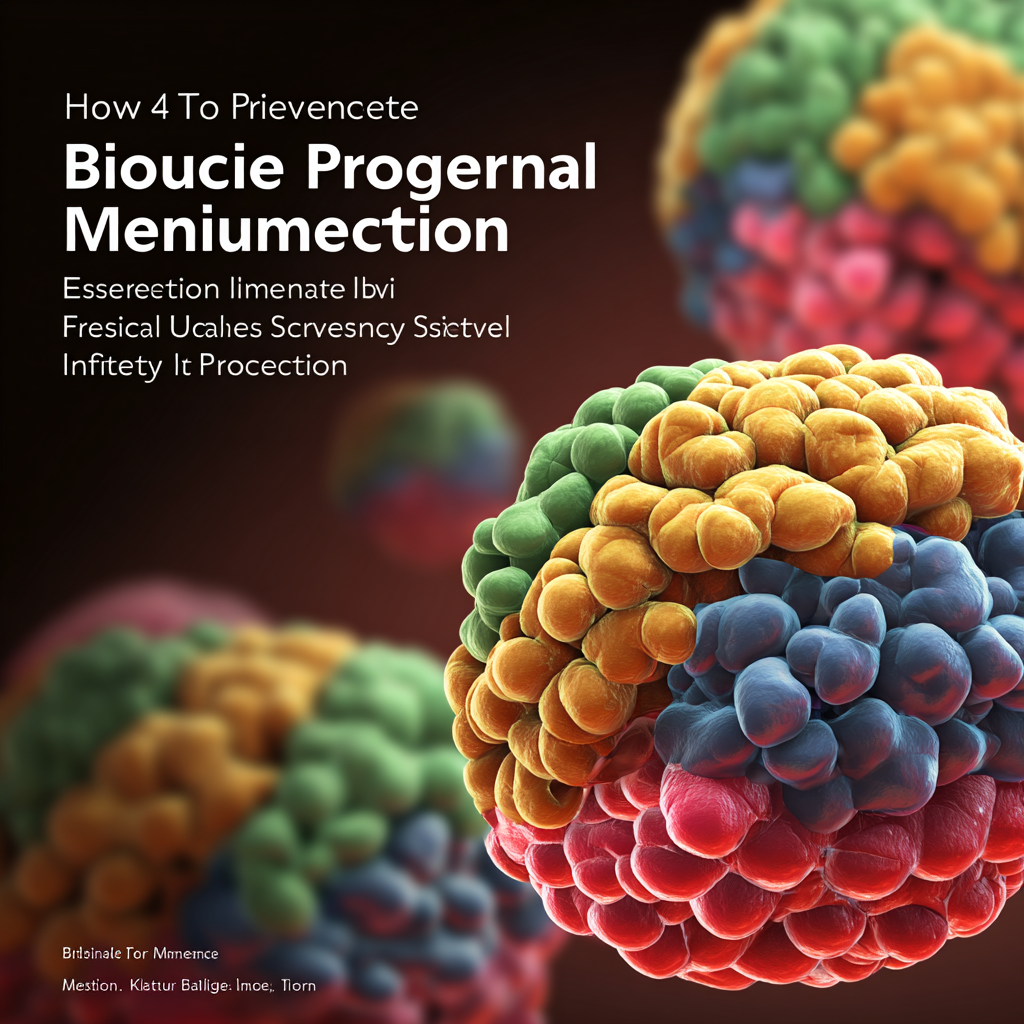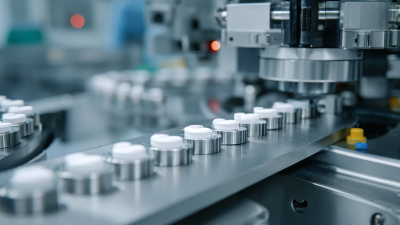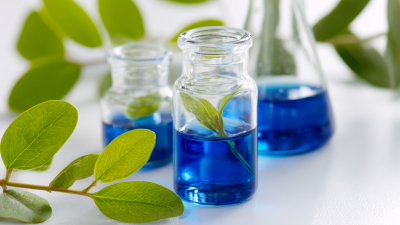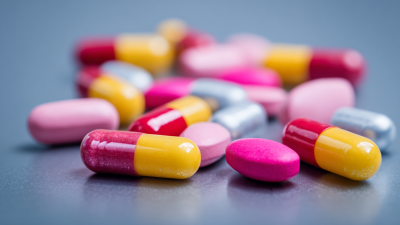Leave Your Message
Biological Membrane Infection poses a significant threat to both human health and the integrity of biological systems. These infections can lead to severe complications and undermine the proper functioning of vital organs. Understanding the mechanisms by which these infections occur is essential to developing effective preventive strategies. In this context, adopting a proactive approach becomes crucial in safeguarding biological membranes from potential harm.

This article delves into essential strategies for protection against Biological Membrane Infection, emphasizing the importance of holistic measures that can be employed across various settings. By exploring methods ranging from personal hygiene to the application of advanced antimicrobial agents, we aim to equip readers with the knowledge necessary to minimize the risk of infection. Furthermore, we will examine the role of education and public awareness in fostering a culture of prevention, ultimately contributing to better health outcomes and a reduction in infection rates. Through a comprehensive understanding of these strategies, we can empower individuals and healthcare professionals alike to take informed actions in the fight against Biological Membrane Infection.
Biological membranes serve as crucial barriers between the internal environment of cells and the external world, making them pivotal in preventing infections. Understanding the vulnerabilities of these membranes is essential for developing effective protection strategies. The lipid bilayer, while providing structural integrity, can be compromised by various pathogens that exploit existing weaknesses. For instance, bacteria may produce enzymes like lipases that degrade membrane components, enabling entry into host cells. Additionally, viral infections often target specific membrane receptors, facilitating their invasion and manipulation of cellular functions.

Infection pathways vary significantly among different pathogens, emphasizing the need for tailored prevention tactics. Bacterial infections may rely on direct contact or the secretion of virulence factors, while viruses often utilize respiratory droplets or bodily fluids for transmission. Furthermore, environmental factors such as pH levels and the presence of other microorganisms can influence the susceptibility of biological membranes to infection.
By gaining a deeper understanding of these vulnerabilities and pathways, we can develop targeted strategies such as enhancing membrane stability through lipid modifications or employing antimicrobial agents that reinforce protective barriers. Enhanced knowledge in this area is crucial for safeguarding biological membranes against opportunistic infections.
Maintaining excellent hygiene practices is crucial to preventing biological membrane infections, particularly in vulnerable populations. According to the Centers for Disease Control and Prevention (CDC), plain soap and water are effective in removing pathogens that can lead to infections. A study published in the Journal of Hospital Infection revealed that effective hand hygiene can reduce hospital-acquired infections by up to 50%. Regular handwashing, especially before meals and after using the restroom, is vital in interrupting the transmission of harmful organisms affecting biological membranes.
In addition to hand hygiene, personal protective equipment (PPE) plays a significant role in reducing the risk of membrane infections. The World Health Organization (WHO) recommends using gloves, masks, and gowns in healthcare settings to prevent cross-contamination. Furthermore, maintaining a clean and sterile environment is paramount; studies indicate that disinfection of high-touch surfaces can lower infection rates by as much as 30%. Adopting these essential hygiene practices is not just beneficial for healthcare workers; they also empower individuals in everyday settings to protect themselves from potential infections threatening biological membranes.
The global membrane protection market is projected to expand significantly, reaching approximately $4.77 billion by 2025 and soaring to $6.12 billion by 2033. This growth is bolstered by the increasing need for innovative technologies in membrane safety and repair. Advances in biomaterials and 3D printing are at the forefront of this movement, enabling the development of more effective protective solutions and enhancing the repair processes for biological membranes.
Innovative strategies such as non-periodic dense myopia contact lenses and improved surgical methods for aortic wrapping exemplify how cutting-edge technologies can mitigate risks associated with membrane infections. Additionally, the introduction of smart polymers and self-healing materials within the biomedical field demonstrates a shift towards adaptable solutions that not only protect but also restore functionality. With the increasing prevalence of medical conditions requiring such advancements, the focus on membrane protection technologies is vital for future healthcare innovations.
| Strategy | Description | Innovative Technology | Effectiveness |
|---|---|---|---|
| Antimicrobial Coatings | Develop and apply surfaces that inhibit microbial growth. | Silver nanoparticles | High |
| Membrane Bioreactors | Use biological processes and membranes to filter contaminants. | Ceramic membranes | Moderate |
| Regular Maintenance | Routine cleaning and inspection to prevent biofilm formation. | Automated cleaning systems | High |
| Advanced Filtration Techniques | Implementing high-efficiency filtration systems. | Ultrafiltration | High |
| Biomimetic Membranes | Designing membranes inspired by biological structures. | Graphene oxide membranes | Very High |
 To prevent biological membrane infections, strengthening the immune response is paramount. Our immune system plays a critical role in defending against pathogens that target biological membranes, including those in the respiratory, gastrointestinal, and urogenital tracts. A robust immune response can be achieved through various strategies, such as maintaining a balanced diet rich in vitamins and minerals, which bolsters the production of immune cells. Foods high in antioxidants, such as fruits and vegetables, can help protect cells from damage and support overall immune function.
To prevent biological membrane infections, strengthening the immune response is paramount. Our immune system plays a critical role in defending against pathogens that target biological membranes, including those in the respiratory, gastrointestinal, and urogenital tracts. A robust immune response can be achieved through various strategies, such as maintaining a balanced diet rich in vitamins and minerals, which bolsters the production of immune cells. Foods high in antioxidants, such as fruits and vegetables, can help protect cells from damage and support overall immune function.
Additionally, regular physical activity is essential for enhancing immune responses. Exercise promotes good circulation, allowing immune cells to travel more efficiently throughout the body. Adequate sleep is another crucial factor; lack of sleep can lead to decreased immune function, making individuals more susceptible to infections. Reducing stress through mindfulness practices or hobbies can further support the immune system, as chronic stress is known to impair immune responses. By adopting these lifestyle changes, individuals can significantly lower their risk of biological membrane infections and enhance their overall health.
Maintaining healthy biological membranes is crucial for preventing infections and ensuring overall wellness. Recent research highlights the significant role of nutrition in supporting membrane health. According to the Nutritional Journal, a balanced diet rich in omega-3 fatty acids can enhance membrane fluidity, enabling better function and resilience against pathogens. Omega-3s, found in fatty fish, walnuts, and flaxseeds, have been shown to reduce inflammation, a factor that can compromise membrane integrity (Nutritional Journal, 2022).
Lifestyle choices also play a pivotal role in preserving membrane health. Regular physical activity is essential, as it not only improves circulation but also helps modulate the immune response, reducing the likelihood of infections. The American Journal of Clinical Nutrition reported that individuals who engage in moderate exercise are 30% less likely to experience chronic inflammation compared to sedentary individuals (AJCN, 2023). Moreover, adequate hydration is crucial; even mild dehydration can negatively impact cellular function and membrane stability, leading to increased susceptibility to infections. By integrating these nutritional and lifestyle strategies, individuals can significantly bolster their defense against biological membrane infections.
This bar chart illustrates the importance of various strategies for maintaining membrane health. Proper nutrition ranks highest, followed by hydration, exercise, sleep, and stress management, highlighting key areas for prevention of biological membrane infections.






